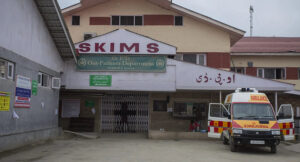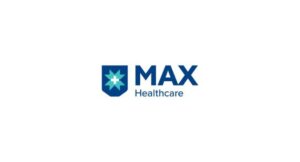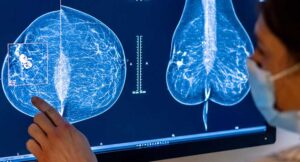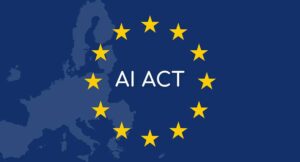The People’s Liberation Army is using DeepSeek’s artificial intelligence (AI) for non-combat support functions, according to Chinese media reports.
Analysts expect the AI models to find imminent application in battlefield intelligence surveillance and decision-making by the Chinese military.
DeepSeek’s open-source large language models (LLMs), which have drawn global attention and praise, are being used in PLA hospitals, People’s Armed Police (PAP), and national defence mobilisation organs, according to publicly available information.
Earlier this month, the general hospital of the PLA’s Central Theatre Command announced it had authorised “embedded deployment” of DeepSeek’s R1-70B LLM, saying it could provide treatment plan suggestions to support doctors.
The hospital also emphasised patient privacy and data security, noting that all data was stored and processed on local servers.
Similar deployments have been seen in other PLA hospitals nationwide, including the elite PLA General Hospital in Beijing, also known as “301 Hospital”, where senior Chinese officials and military officers receive treatment and highly sensitive personal data is believed to be stored.
Ren Hao, a senior software engineer at the hospital, in a report published on the website of CHIMA, a branch of the Chinese Hospital Association, gave details on 301’s collaboration with Huawei, a US-sanctioned Chinese tech giant. The project aims to deploy the DeepSeek-R1 model on Huawei’s Ascend hardware for building a local knowledge database.
Chinese start-up DeepSeek has garnered significant attention for its remarkable cost-effectiveness and performance, prompting US tech companies to reassess their competitiveness.
DeepSeek’s rise has been meteoric, with its AI app topping the Apple App Store charts in China in February. Beijing is promoting AI integration across industries, including healthcare, manufacturing, and urban development, and some Chinese government agencies are increasingly utilising DeepSeek models, including for anti-corruption efforts.
Some units of PAP – a paramilitary police force under the command of the Central Military Commission, which also directs the PLA – are using the app for daily physical training and psychological counselling.
The Hainan PAP’s political work department shared an example of soldiers using DeepSeek to address anxiety and create an exercise plan, according to a post on its social media account.
According to Sam Bresnick, a research fellow at Georgetown University’s Centre for Security and Emerging Technology who focuses on military AI applications, the use of DeepSeek’s models in settings like hospitals and soldier training programmes offers the PLA a controlled environment for experimentation.
By initially deploying LLMs in non-combat scenarios, the PLA could try to address technical and operational challenges before expanding into more sensitive, high-risk areas, Bresnick said.
The PLA had long highlighted the potential utility of AI for military decision-making, he noted, adding that “the emergence of an advanced model like DeepSeek’s R1 might help in that area”.
The PLA has called for the incorporation of high-end technology, particularly AI, to strengthen its combat capabilities. This would include boosting the effectiveness of drone swarm tactics, improving the efficiency and realism of pilot training, and battlefield decision-making support.
A programme on state broadcaster CCTV as far back as 2023 said the PLA was testing ways to deploy hundreds of drones for swarm tactics with the help of AI and cloud computing.
However, specific details about what types of AI tools used by the Chinese military remain classified.
The state-held Guangming Daily said last month that DeepSeek “is playing an increasingly crucial role in the military intelligentisation process, ushering in a new chapter in the evolution of military intelligentisation”.
It said DeepSeek was capable of processing massive amounts of battlefield data in real time, enabling precise situational awareness during combat.
The article also used an amphibious-landing scenario to illustrate how DeepSeek could dynamically adjust operational plans based on real-time battlefield changes, thus helping commanders to make more accurate and fast decisions.
Fu Qianshao, a Chinese military analyst, said DeepSeek’s applications in routine physical training and logistical support “demonstrate the PLA’s commitment to ‘staying up-to-date and fully utilising AI technology to enhance comprehensive combat capabilities’.”
“It cannot be ruled out that DeepSeek has been used for other combat functions,” Fu said, adding that “the integration of AI into command systems has been under way for a considerable time”.
DeepSeek’s military applications underscore the advancements in China’s civil-military fusion strategy, which aims to integrate civilian and military technologies.
Bresnick said that DeepSeek’s adoption showed how the PLA was assimilating advanced technologies from the civilian sector.
The launch of DeepSeek’s AI and its wide application in China also come at a time of a heated tech race with the United States.
Bresnick noted that while most experts still believed that the US had an edge over China in AI development, “the ultimate advantage will belong to the nation that can more effectively integrate and deploy AI in military operations”.
“At present, no clear front runner has emerged there,” he said.
The Nanjing National Defence Mobilisation Office – part of a nationwide network of such offices responsible for civil mobilisation during wartime – last month released a DeepSeek user guide that indicated its AI models could provide efficient support in various areas such as emergency evacuation plans, national defence education and industry resource surveys.
Utilising technologies including LLMs would improve the quality and efficiency of national defence mobilisation, the armed forces’ official newspaper PLA Daily said in an article on Thursday. South China Morning Post









